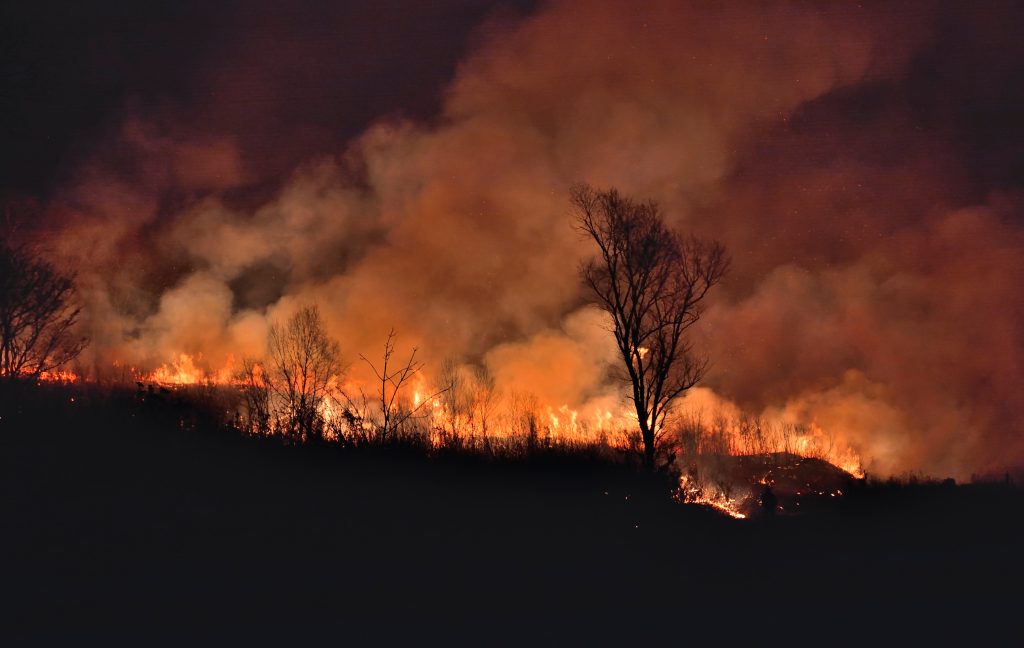
California’s wildfires have wreaked havoc in the state. According to Reuters, the current cost to insurers is now over $20 billion in damages. These fires have not only devastated the environment but also imposed severe financial burdens on residents.
The increasing frequency and intensity of wildfires have led to soaring costs for homeowners, renters, and businesses alike. From skyrocketing insurance premiums to costly evacuations, the economic impact is impossible to ignore. Here are eight financial consequences that Californians face as they endure the challenges of living amid relentless wildfires.
1. Skyrocketing Insurance Premiums
One of the most immediate financial impacts of wildfires is the surge in home insurance premiums. Homeowners in high-risk areas are often forced to pay significantly more for coverage, with some policies doubling or even tripling in cost. In extreme cases, insurers may cancel policies altogether, leaving residents scrambling for alternatives. Many Californians turn to the state’s FAIR Plan, which offers basic fire insurance at a steep price but lacks comprehensive coverage. These escalating costs strain household budgets and make it increasingly difficult for families to stay insured.
2. Property Damage and Reconstruction Costs
Wildfires can destroy homes and infrastructure in a matter of minutes, leaving families with devastating losses. Even if insurance covers part of the damage, out-of-pocket costs for reconstruction and repairs can be overwhelming. Construction materials and labor costs have risen dramatically, further inflating rebuilding expenses. In some cases, residents are unable to rebuild due to zoning changes or financial constraints, forcing them to relocate. The emotional and financial toll of losing a home is often compounded by the challenge of starting over.
3. Evacuation Expenses
When wildfires threaten, evacuation becomes a necessity, often leading to unexpected costs. Temporary lodging, food, transportation, and other essentials can add up quickly, especially for extended evacuations. Many families also face income loss if they’re unable to work during this period. For those with pets or livestock, boarding and transportation costs can be significant. While safety is the top priority, these expenses place an additional financial burden on already stressed residents.
4. Health-Related Costs
The smoke and poor air quality caused by wildfires can lead to serious health issues, especially for children, the elderly, and those with preexisting conditions. Respiratory problems, allergies, and stress-related ailments often require medical attention, resulting in increased healthcare costs. Many residents invest in air purifiers, masks, and other protective equipment to mitigate the effects of smoke. These measures, while necessary, come at a financial cost. Long-term exposure to wildfire smoke also raises concerns about chronic health problems and associated expenses.
5. Declining Property Values
Living in a wildfire-prone area can significantly impact property values, making it harder to sell or refinance a home. Potential buyers are often deterred by the risks and high insurance premiums associated with these areas. Properties near recent wildfire zones may also face devaluation due to environmental damage and increased perception of risk. For homeowners, this means reduced equity and potential financial losses when trying to sell. Declining property values can also affect local economies, leading to reduced tax revenues and community resources.
6. Business Disruptions
Wildfires disrupt businesses by forcing closures, damaging infrastructure, and cutting off supply chains. Small businesses are particularly vulnerable, as they often lack the resources to recover quickly. Loss of income during fire-related closures can lead to layoffs and financial instability for employees. Even after the fires are contained, the road to recovery is long, with businesses facing rebuilding costs and reduced customer traffic. These disruptions ripple through local economies, affecting both business owners and workers.
7. Increased Utility Bills

Utility companies often pass on the costs of wildfire prevention and damage repairs to customers, resulting in higher bills. Efforts like clearing vegetation, upgrading infrastructure, and paying settlements for fire-related lawsuits are costly, and these expenses are frequently shifted to consumers. Residents in affected areas may also face power shutoffs during high-risk periods, leading to additional costs for generators and fuel. These rising utility expenses further strain household budgets. For many, it feels like paying more for less reliable service.
8. Emotional and Financial Strain on Families
The psychological toll of living with the constant threat of wildfires cannot be underestimated. Families face ongoing anxiety about evacuation orders, property damage, and health risks. This emotional strain often leads to financial consequences, as people may need counseling, take unpaid time off work, or make costly preparations to feel safer. The cumulative impact of these stresses can lead to burnout and long-term financial instability. Addressing both the emotional and financial challenges is crucial for resilience in wildfire-prone areas.
How to Protect Yourself Financially
Living amid California’s wildfires requires proactive financial planning and preparation. Review your insurance policies to ensure you have adequate coverage and explore disaster relief resources if needed. Create an emergency fund to cover evacuation costs and unexpected expenses. Invest in fire-resistant home improvements to reduce potential damage and possibly lower insurance premiums. Most importantly, stay informed and have a plan in place to protect both your finances and your family’s well-being.
Have you or anyone you know been affected by the wildfires? We are thinking of you and would love to hear your story.
Read More:

Latrice is a dedicated professional with a rich background in social work, complemented by an Associate Degree in the field. Her journey has been uniquely shaped by the rewarding experience of being a stay-at-home mom to her two children, aged 13 and 5. This role has not only been a testament to her commitment to family but has also provided her with invaluable life lessons and insights.
As a mother, Latrice has embraced the opportunity to educate her children on essential life skills, with a special focus on financial literacy, the nuances of life, and the importance of inner peace.
